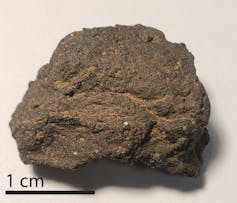
Mystery Outback Glass Fragments Have Cosmic Beginnings
Share
Deep in the Australian outback lies a mystery – the Henbury crater field, a collection of craters formed by a meteorite impact thousands of years ago. Scientists recently analysed unique glass fragments found at the site, uncovering surprising details about the celestial visitor.
Unearthing Secrets from Natural Glass
Natural glass, like volcanic obsidian, offers clues about its formation. Meteorite impacts can also create glass, requiring forensic analysis to pinpoint its origin. In this study, researchers focused on glass found near the Henbury craters.
Henbury Craters: A Window into the Past

The Henbury crater field boasts at least 13 craters, formed roughly 5,000 years ago. Aboriginal traditions also hold stories about this celestial event. Meteorite fragments recovered from the site belong to a type known as IIIAB irons, remnants of an ancient shattered world.
When Meteorite Meets Rock: A Molten Mashup
The meteorite's impact generated immense heat, melting both the meteorite itself and surrounding rock. This molten material formed droplets that solidified into thumb-sized glass pieces, resembling volcanic glass.
Laser Analysis Reveals Hidden Secrets
To delve deeper, scientists used lasers to analyse the glass composition. This revealed a surprising mix – elements from the local sandstone alongside high levels of iron, nickel, and cobalt, exceeding amounts found in exposed rocks. These findings suggest the glass is roughly 10% melted meteorite material.
A Signature of Cosmic Origin

This 10% meteorite content is significant. For comparison, melted rocks from the giant Chicxulub crater (thought to have caused the dinosaur extinction) contain less than 0.1% meteorite material. Additionally, the Henbury glass showed elevated levels of rare elements like chromium and iridium, hallmarks of a cosmic origin.
A Rare Find: Meteorite-Rich Glass
While meteorite impacts are not uncommon, meteorite-rich glass like this appears to be rare in Australia. Similar glass has only been documented at two other, younger and smaller craters – Kamil Crater in Egypt and Wabar Crater in Saudi Arabia.
The Importance of Natural Glass Analysis
Identifying meteorite residue in natural glass offers a definitive way to confirm a crater's cosmic origin. Many circular depressions on Earth resemble craters, but not all are caused by celestial impacts. Meteorite residue in glass provides an unambiguous confirmation.
The Hunt for More Cosmic Clues
Many enigmatic natural glasses exist worldwide, with uncertain origins. Careful analysis is crucial to identify their formation process. With ongoing space missions collecting samples from asteroids and Mars, scientists have a wealth of material to study. However, these remarkable "bush glasses" deserve further investigation, potentially revealing hidden secrets of our cosmic past.
You’ve come this far…
Why not venture a little further into A.S.S. - our exclusive Australian Space Society.
And keep thrusting Australia into the deep unknown…
#Space_Aus




